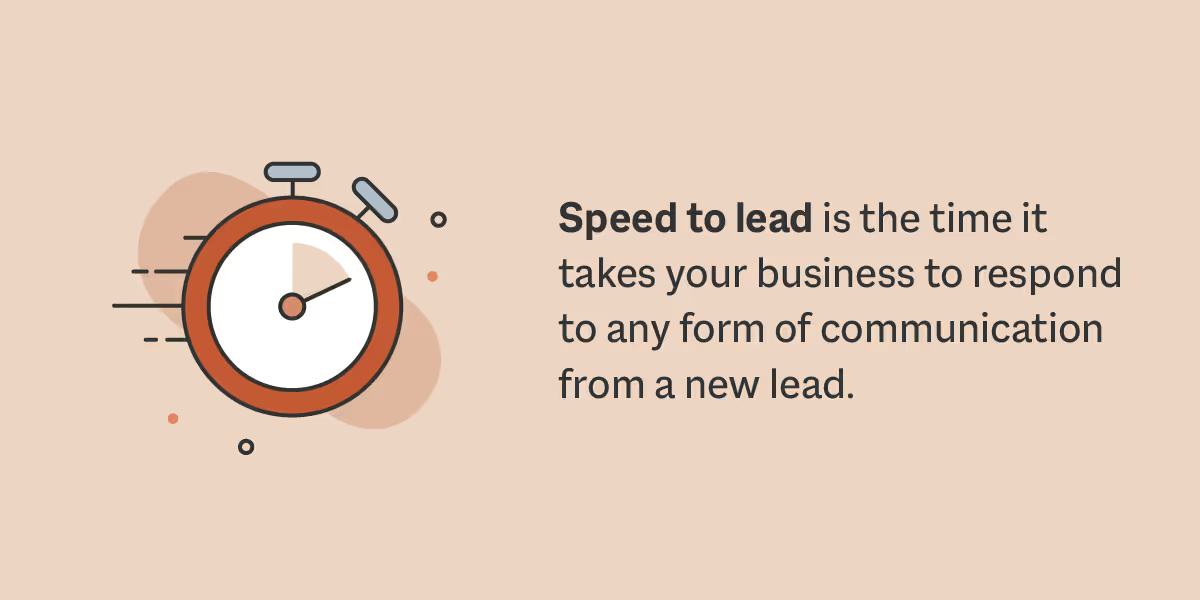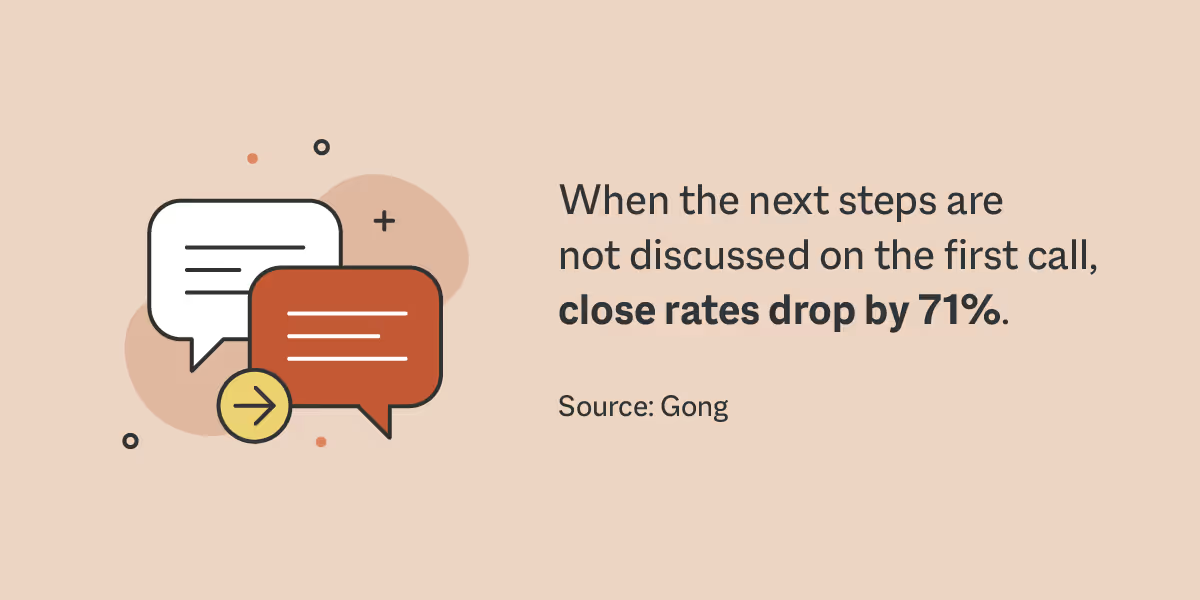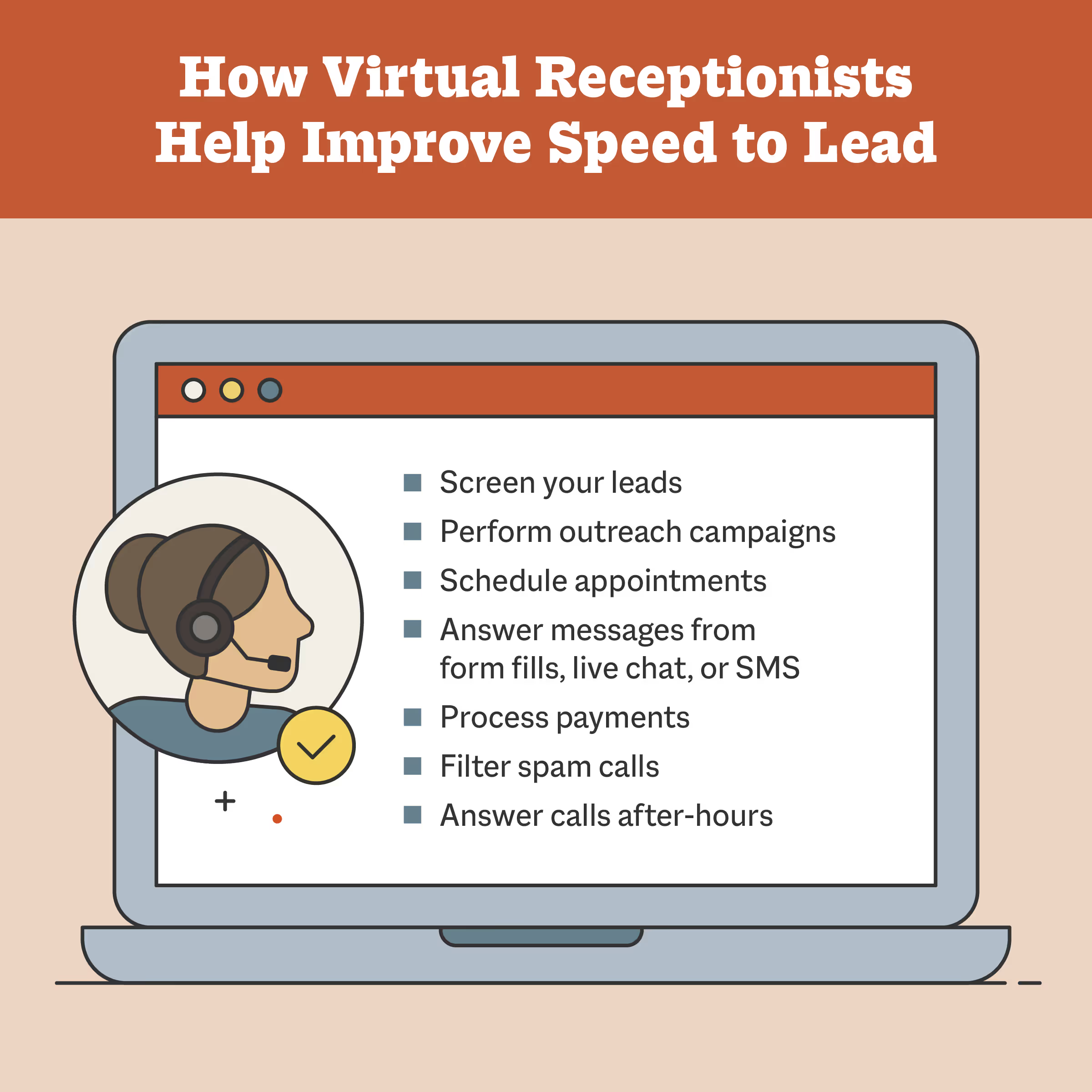Speed to Lead: Definition & How To Improve It
Speed to Lead: Definition & How To Improve It

When it comes to sales, you must communicate with your leads right away, or you risk them turning to your competitors for that instant gratification. Your speed to lead — the time it takes to communicate with leads — is a valuable measure to help streamline your team’s customer engagement processes and win more sales.
Keep reading to learn more about how you can integrate new practices to boost your speed to lead and how Smith.ai can help your team communicate faster and more seamlessly.
What is speed to lead?
Speed to lead is the time it takes your business to respond to any form of communication from a new lead. This metric helps a business understand its overall response time.
Typically, a shorter response time helps a business score more leads. When a lead reaches out to a business about an offering, making a purchase is typically top-of-mind or they’re open to learning more. The longer you leave them waiting for a response, the more time they have to doubt your offering and explore other options.
Speed to lead is calculated from many forms of business communication including:
- Inquiring phone calls
- Live chat messages
- Contact form responses
To calculate your team’s speed to lead, simply add up the total response time for all instances of communication and divide it by the number of leads your team has contacted.

How fast do you need to respond to a lead?
It’s generally best to respond to a lead 10 minutes or less after they’ve reached out to you. According to HubSpot, customers expect a response in 10 minutes or less when they have a question. A survey by PWC also found that 80% of Americans feel that speed and convenience are necessary for a positive customer experience.
When a lead makes an effort to contact your business, their interest is at its peak. From there, attention and intent to make a purchase decrease, so it’s best to respond to leads as soon as possible.
How to improve your speed to lead
Your conversion rate reflects how many leads become customers. The goal of nurturing leads is to improve this metric, and speed to lead is particularly important in this process. After all, how can you expect a lead to convert if they’re left waiting over an hour for you to respond to their query? Keep reading for nine simple changes your business can make to boost your speed to lead and improve communication responses — and ultimately conversions — with prospects.

1. Set goals and milestones
Each interaction with a lead should be intentional. Set goals and milestones for your sales team to work toward. For example:
- Qualify a set number of leads per week.
- Reach out to a set number of new potential leads in a week.
- Shorten the average time it takes to respond to an initial inquiry by 10% per quarter.
You should also create standards for the team to take notes after each conversation — and make sure it’s logged in your CRM. This will allow your team to work together if one team member makes initial contact with a lead and another follows up to help push leads through the sales funnel seamlessly.
2. Implement a proper follow-up system
Did you know that 80% of sales require five follow-ups to convert, but 44% of sales professionals only follow up with leads once? The key to improving your team’s communication is consistency. Setting standards for follow-ups creates a united front across your sales team and ensures consistent client experiences. It also ensures every interaction adds value and maximizes its potential. Here are some things to consider when creating a consistent follow-up system for your team:
- Enforce standard response timelines via a shared SOP, aiming for a response time expectation of less than five minutes, if possible.
- Use official response templates for common questions.
- Offer approved offers or discounts to add value.
- Outsource sales outreach so you can reach leads faster.

3. Prioritize qualified leads
One of the most effective ways your business can save resources is to qualify leads as early as possible and focus heavily on them. These leads are closer to making a purchase and, therefore, may take less effort to convert.
Ensure your overall strategy accounts for qualifying leads to ensure prospects don’t get lost in the sales funnel. Here are some questions to ask yourself to help qualify leads:
- Can your offering resolve the lead’s major pain points?
- Can the lead afford your offering?
- Is your lead able to make a purchase in your ideal timeframe?
- Are you speaking to a person with purchasing power?
- Do they have any issues or concerns that may stall or stop the sales process?
Smith.ai virtual receptionists can help screen your leads so your sales team can focus on more high-impact tasks or on closing deals.
4. Categorize your prospects
Categorizing prospects helps your sales team stay organized and tailor their approach to each instance of communication. Depending on your team’s approach and strategy, you might categorize prospects based on their location, vertical, or how close they are to making a purchase.
Here are some different categories you can track and how they can improve your speed to lead:
- Referrals: supports relationships with multiple leads at once
- Financial status: ensures you’re working with qualified leads
- Vertical: helps sales teams tailor their approach based on the market
5. Meet with prospects properly
Reaching out to prospects in the right channels at the right time is a key way to keep the conversation going and improve speed to lead. Consider these factors to make every meeting count:
- When does the lead prefer to take meetings?
- When does the lead have time to give you the proper attention?
- How does the lead prefer to communicate with you?
- What information does your lead need ahead of time?
Each prospect your sales team meets should feel valued. It can come across as unprofessional if your prospect has to continue repeating basic information about their business or needs because of clunky hand-offs or lack of proper note-taking.
Your team should have ample time to prepare for each meeting. The more information your team can gather about the prospect’s concerns and needs, the quicker they can convert that prospect.
To help maintain a schedule that works for your team, Smith.ai’s virtual receptionists can book appointments, ensuring everyone is on the same page and has plenty of prep time to nail every call.
6. Route leads by geography or sales region
Routing leads by geography makes sense from multiple perspectives. When a sales team member lives near their prospects, not only does it make in-person communication more economical, but living in the same area as a prospect can help establish better relationships.
If you don’t sell locally, it’s still important to break up your territories by region and route leads accordingly. This way, team members can develop regional expertise and better meet the unique needs of their area’s leads.
7. Route leads by strengths and specialties
Another strategy for assigning leads is to play to your sales team’s strengths. If a salesperson is already knowledgeable in a certain vertical, then it makes sense to have them work with leads in that vertical so they can flex their expertise to help create trust.
8. Leverage AI and automation
Using AI and automation for certain steps of the sales process can help your sales team focus their efforts where they can have the most impact. For example, you can configure auto-responses to help prospects feel acknowledged the moment they submit a query. Just remember to incorporate some personalization, including a custom field that auto-populates their name, for example, to make these responses feel a little less canned and void of the human touch.
Go a step beyond automation with AI-powered tools. Smith.ai uses AI to block spam calls and enable live agents to craft better responses for live chat. These features make it easier to devote time and energy to responding to and meeting the needs of real leads.

9. Choose your tools wisely
Sales tools should support your goals and improve your leads’ experiences. Smith.ai’s virtual receptionists give your team support where it matters most. We can:
- Screen your leads
- Perform outreach campaigns
- Schedule appointments
- Answer messages from form fills, live chat, or SMS
- Process payments
- Filter spam calls
- Answer calls after-hours
Smith.ai’s virtual receptionists offer support around the clock to accelerate your speed to lead and make sure no prospect gets left behind.
When the leads start flowing, are you ready?
Improving your team’s speed to lead is simpler than you might think — it’s all about finding ways your team can reliably improve how they follow up on leads.
When you partner with Smith.ai, you will get a team of virtual receptionists to act as your 24/7 answering service so you never miss a lead. Plus, we can assist with outreach campaigns, appointment scheduling, and lead intake.
If you want to learn more about how Smith.ai can help your business, book a free consultation.
Take the faster path to growth. Get Smith.ai today.
Key Areas to Explore
Technical Implementation Terms
Voice user interface (VUl) design
Speech recognition integration
Text-to-speech optimization
API connectivity and webhooks
Real-time data synchronization

Your submission has been received!














.svg)



